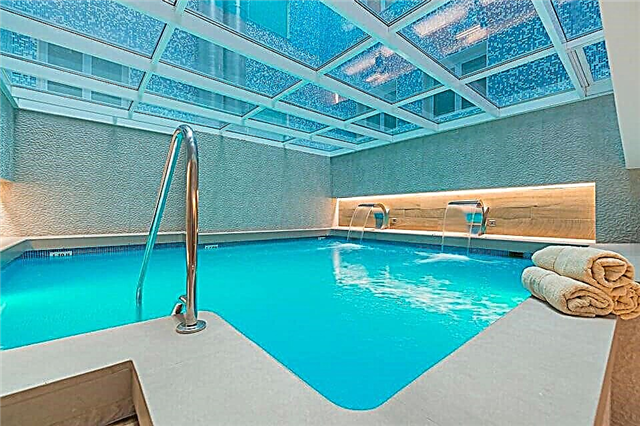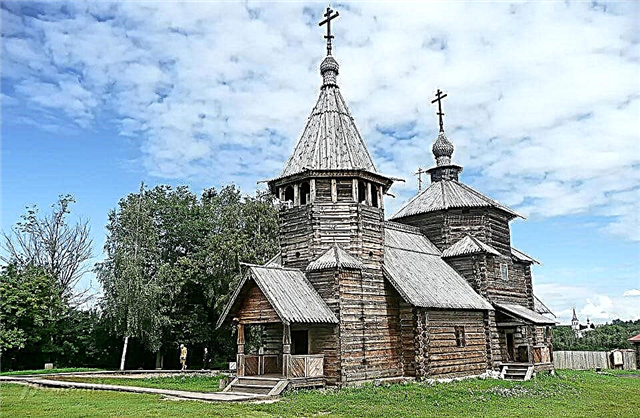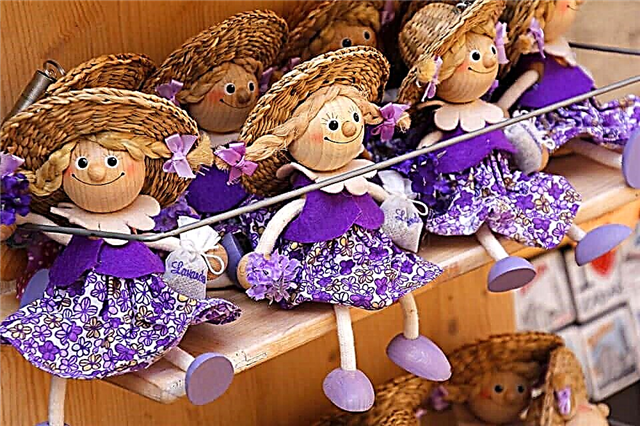Address: Moscow, st. Volkhonka, 12
Date of foundation 1912 year
Founder Ivan Vladimirovich Tsvetaev
Coordinates: 55 ° 44'50.3 "N 37 ° 36'18.7" E
Content:
The A. Pushkin State Museum of Fine Arts is the largest Russian museum displaying foreign art. It houses the largest collection of works by world famous painters in the country. In addition, the museum owns the richest collections of numismatics, sculptures and small art forms.

The main building of the Pushkin Museum of Fine Arts
How the museum was created
For a long time, Moscow University had its own Cabinet of Fine Arts and Antiquities. It housed a library and kept old vases, a large collection of coins and several plaster casts of ancient sculptures. At the end of the 19th century, university professor Ivan Vladimirovich Tsvetaev came up with an initiative to create a new museum in the city dedicated to the fine arts.
A design competition was held among the architects, and construction of a huge building for the museum began in Moscow. It was erected on a high podium in the best traditions of Greek antique temples. All works were supervised by the talented architect Roman Ivanovich Klein. The construction of the new museum was sponsored by the owner of glass factories and diplomat Yuri Stepanovich Nechaev. This philanthropist invested in this project a huge amount of 2.6 million rubles at that time.

Hall No. 15. Greek courtyard. In the center - a cast of the portal of the Liebfrauenkirche cathedral
It is curious that the design of the museum did not include electric lighting. In those days, it was believed that sculptures are best viewed in natural light, so the engineer and architect Vladimir Grigorievich Shukhov developed unique glass floors over the museum building.
At first, they wanted to make marble columns to decorate the facades of Ural stone. However, it quickly became clear that it would not be possible to select a stone of the required conditions. Therefore, the museum columns 10 m long were ordered in Norway. When they were ready, the columns were taken to Russia by sea, then loaded onto barges and transported along the rivers to Moscow.

Room 25. Art of Ancient Italy and Ancient Rome
While the construction was underway, Tsvetaev worked on the creation of a future exhibition. He collected money from benefactors and ordered plaster copies of famous sculptures abroad. At the beginning of the last century, Egyptian researcher Vladimir Semenovich Golenishchev sold his collection of ancient Egyptian art to the future museum.
The museum was opened in the summer of 1912 in the presence of the sovereign and the top of the Russian nobility. Then it bore the name of the Russian Emperor Alexander III and is under the jurisdiction of Moscow University. The new exposition quickly gained popularity among Muscovites. On weekdays, it was attended by over 700 people, and on Sundays and holidays, about 2.5 thousand spectators became guests of the museum.

Room 28. Italian sculpture of the 15th century
Everyone who came here could see casts from antique statues, copies of small architectural forms and antique mosaics. Only ancient sarcophagi, papyri and sacrificial offerings from Egyptian tombs were genuine exhibits. It is curious that in the first years of work in the new Moscow museum not a single picture was exhibited.
Museum history
After the revolution, the nationalization of the property of nobles and merchants took place throughout the country. The paintings taken from private collections were handed over to museum employees, and they formed the main fund of painting. This is how the painting "Girl on the Ball", painted by the famous artist Pablo Picasso, got into the collection of the Pushkin Museum. In 1937 the museum was named after the Russian poet A. Pushkin.

Hall 14. Greek courtyard
At the very beginning of the war, there was a threat that unique paintings and sculptures might suffer from German bombing. All collections were neatly packed and transported by rail away from the capital - to Solikamsk and Novosibirsk.
The building, like the entire city center, was carefully camouflaged, but this did not save it from bombers. The roof suffered the most from the bombings. Part of it was simply destroyed. The facades of the museum also received potholes. They can be seen today if you look at the upper part of the wall, which faces Maly Znamensky Lane.

Hall number 24
In 1944, when the course of World War II was a foregone conclusion, the exhibits were returned to the capital and placed in their original places. The paintings and sculptors did not suffer at all, and after three years of evacuation, they were again accessible to viewers.
In 1949, on the occasion of Stalin's jubilee, an exhibition of gifts to the leader was organized in the museum. Since there were many exhibits, they were placed in several halls. At this time, art exhibitions in the museum temporarily stopped. The unusual exhibition of gifts existed until Stalin's death and was closed in 1953.

Room 24. Greek Art of the Late Classics and Hellenism
In the mid-1980s, the Department of Private Collections was created at the museum. And 20 years later, the first visitors were received by the halls of the Art Gallery, which housed works by artists of the 19th-20th centuries from Europe and America.
The most famous exhibitions
The main collection of the museum consists of works of art from different times. Every year, the Pushkin Museum hosts about 30 exhibitions, the largest of which have been prepared for several years. They attract so many spectators that long queues line up at the ticket office of the museum.

Room 6. Hellenistic and Roman Egypt, Coptic art
In 1955, 1.2 million people came to the exhibition of paintings from the Dresden Gallery. Viewers were able to see the canvases saved during the Second World War. After careful restoration and exhibition, they were returned to their homeland - to the German city of Dresden.
In 1974, the Mona Lisa was brought from the Parisian Louvre to Moscow. The painting, painted by Leonardo da Vinci, attracted so many people that Muscovites and tourists had to stand in lines for several hours. During the exhibition, about 311 thousand painting lovers came to admire the famous portrait. Due to the large influx of people, everyone could look at the famous canvas for only 9 seconds. It is noteworthy that this was the last time the painting "Mona Lisa" left Paris.

Hall No. 7. Byzantine art. Italian art of the 13th - 16th centuries
Eight years later, the museum hosted an exhibition of works by Picasso, Kandinsky, Matisse and Malevich, and even more viewers came to it - 655 thousand people. It was a phenomenal success! Several years ago, in 2016, the museum exhibited paintings by the brilliant Italian artist Rafael Santi. The paintings of the famous master of the Renaissance were seen by 200 thousand Muscovites and guests of the capital.
Museum for children
The Pushkin Museum has several clubs for children of different ages, including an art studio for preschoolers and art workshops for ceramics and prints. Children with an interest in art history attend the Young Art Critics Club.

Room 26. European Art of the Middle Ages
For schoolchildren, there are sightseeing and thematic excursions around the museum, which last from 45 to 90 minutes. During classes, elementary school children are introduced to the museum, show the Egyptian hall, talk about the myths of Ancient Greece, the palace of the Assyrian king, Panticapaeum and the birth of Christianity. High school students learn about the history of 19th century European art, Impressionism, Post-Impressionism, and 20th century art.
The museum conducts several educational and play programs for families with children. These are exciting themed quests, clubs, lectures, children's festivals and family excursions.

Hall No. 16. Exhibition "Art of Ancient Cyprus"
Useful information for visitors
Today, one of the most famous museums in Moscow houses over 700,000 unique exhibits. The museum complex includes 27 buildings, and more than a million people come here every year.
The main building has the status of an architectural monument. It is open to visitors from 11:00 to 20:00. Tickets to enter the museum are sold on any day except Monday. They cost from 400 to 600 rubles. Please note that museum entry and ticket sales will close one hour before closing time.

Room 16. Art of Ancient Greece
Visitors are asked to comply with museum rules. You cannot take photos or videos in the museum with a flash, tripod and selfie stick. It is forbidden to bring flowers into the building, touch paintings and sculptures, and also talk on the phone in the halls. Backpacks, umbrellas, large bags and bags can be left by museum guests in the museum storage room.
How to get there
The museum is located in the city center, so it is convenient to get to it from different parts of the capital. The main building is located at 12 Volkhonka Street. It is easy to walk here from the Kropotkinskaya metro station.











